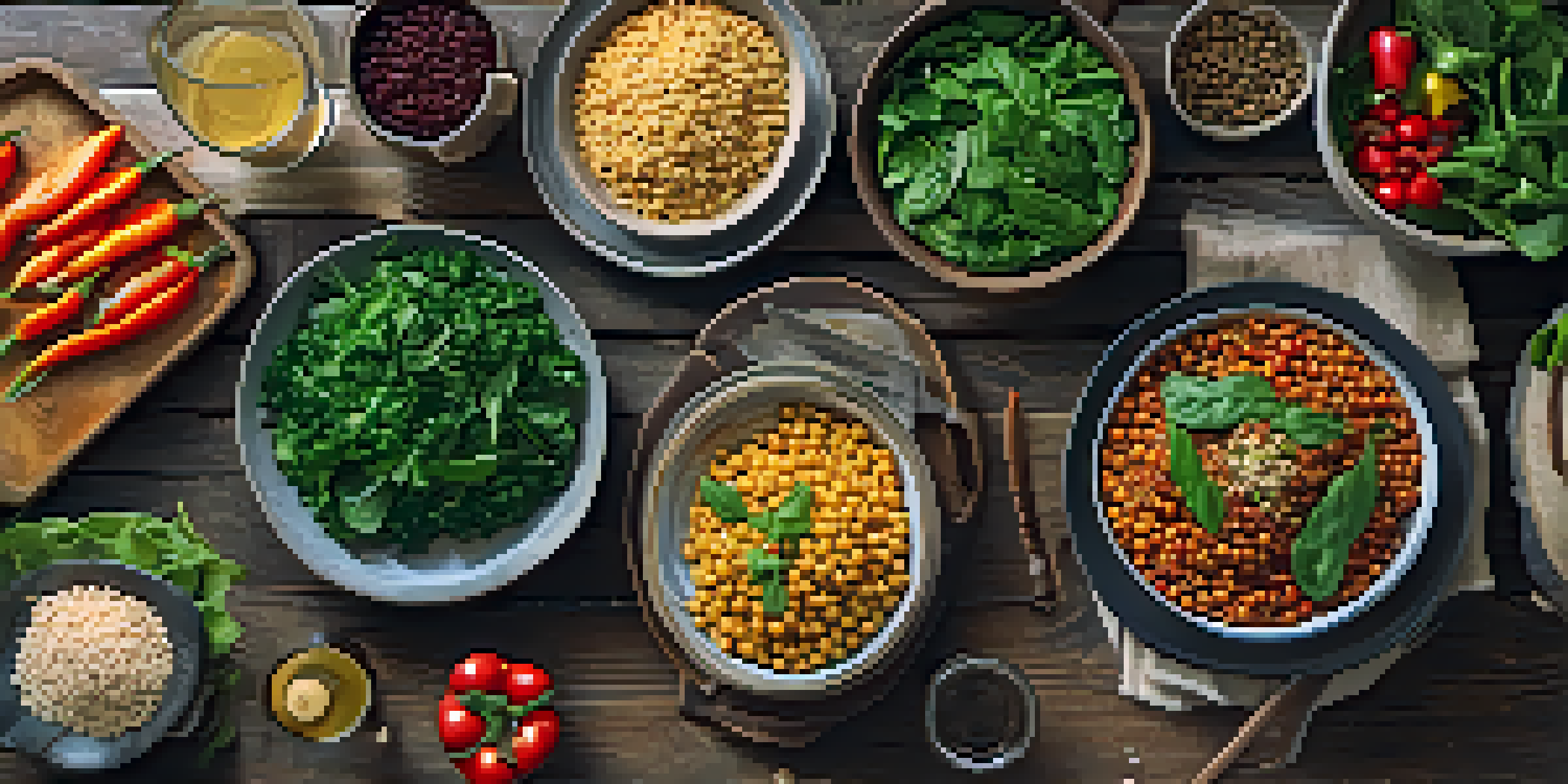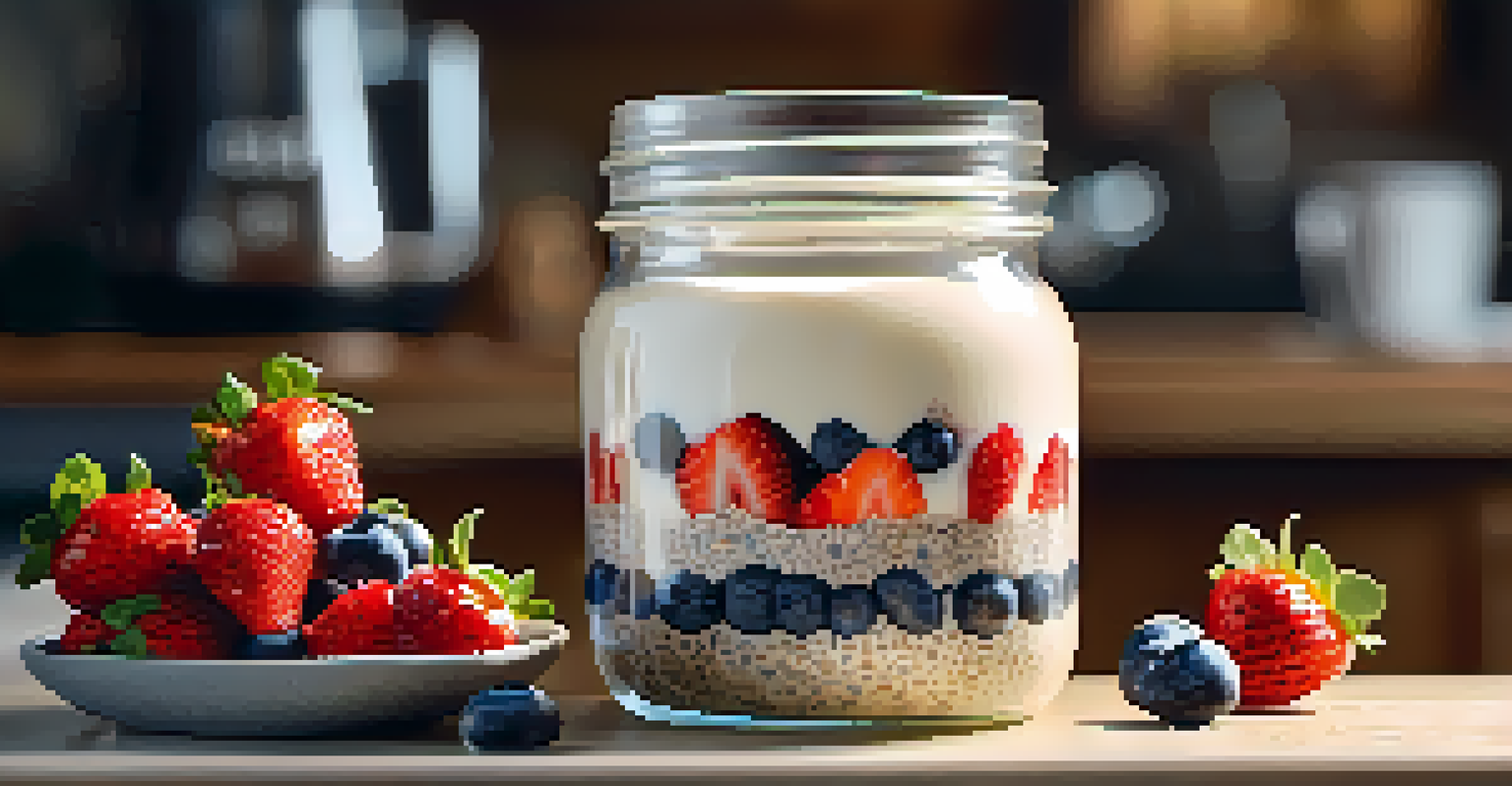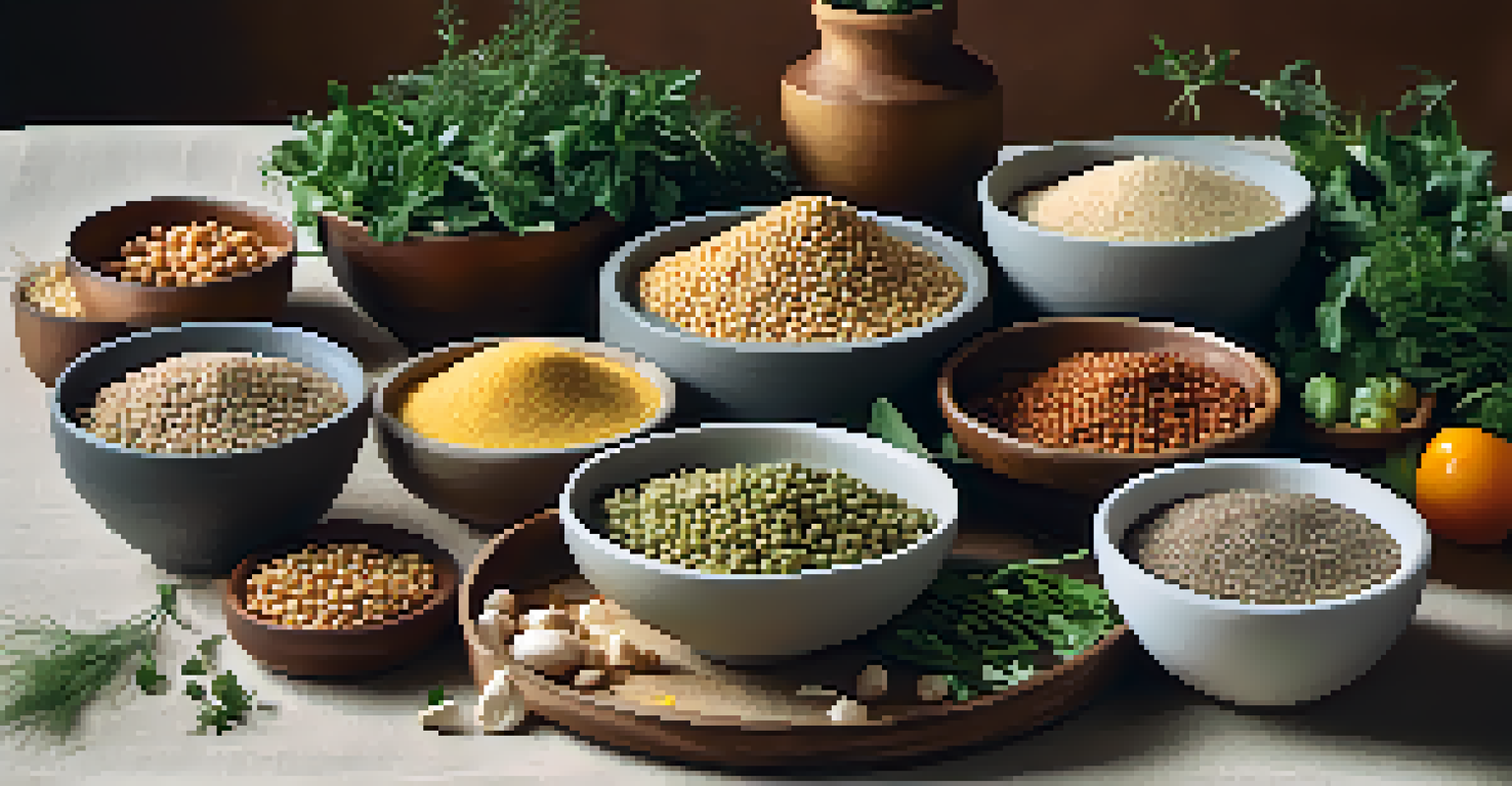Plant-Based Protein Sources: Maximizing Nutrient Intake

Understanding Plant-Based Proteins: What They Are
Plant-based proteins are derived from vegetables, grains, legumes, nuts, and seeds. Unlike animal proteins, they offer a variety of health benefits, including lower cholesterol levels and reduced risk of chronic diseases. These proteins are essential for muscle growth, repair, and overall health, making them a great choice for everyone, not just vegans or vegetarians.
Let food be thy medicine and medicine be thy food.
One common misconception is that plant-based proteins lack quality and quantity. However, many options provide all essential amino acids when combined thoughtfully. For instance, pairing beans with rice creates a complete protein, ensuring you get all the nutrients your body needs.
Additionally, plant-based proteins are often rich in fiber, vitamins, and minerals, contributing to improved digestion and overall health. By understanding what plant-based proteins are, you're already on your way to maximizing your nutrient intake!
Top Sources of Plant-Based Proteins to Incorporate
There are numerous plant-based protein sources to explore. Some of the top contenders include lentils, chickpeas, quinoa, and tofu. Each of these options not only provides a significant protein boost but also comes packed with other essential nutrients.

For example, lentils serve as a powerhouse of protein with around 18 grams per cooked cup, alongside a healthy dose of fiber and iron. Quinoa, often hailed as a superfood, offers about 8 grams of protein per cooked cup and is unique as it contains all nine essential amino acids.
Plant-Based Proteins Are Nutritious
These proteins provide essential amino acids, fiber, vitamins, and minerals, promoting overall health and reducing the risk of chronic diseases.
By incorporating a variety of these sources into your diet, you can diversify your meals and keep your taste buds happy while meeting your protein needs. It’s like opening a treasure chest of flavors and nutrients just waiting to be discovered!
Combining Proteins for Complete Nutrition
While many plant-based proteins are incomplete on their own, combining them can create a complete amino acid profile. This means that when you eat certain foods together, you can obtain all the essential amino acids your body needs. A classic example is pairing peanut butter with whole-grain bread.
The food you eat can either be the safest and most powerful form of medicine or the slowest form of poison.
Another great combination is rice and beans, which not only fills you up but also provides a complete protein source. This strategy is particularly useful for those who rely solely on plant-based foods for their protein intake.
So, don’t hesitate to experiment in the kitchen! Mixing different protein sources can lead to delicious meals while ensuring you meet your nutritional goals.
Nutrient Density: More Than Just Protein
When assessing plant-based proteins, it's crucial to consider nutrient density. This term refers to the amount of essential nutrients, such as vitamins and minerals, present in a food relative to its calorie content. Foods like spinach, kale, and tempeh are not only high in protein but also rich in essential nutrients.
For instance, spinach is low in calories but packed with vitamins A, C, and K, along with iron and calcium. Similarly, tempeh is fermented soybeans that provide protein and probiotics, supporting gut health.
Combining Proteins Enhances Nutrition
Pairing different plant-based foods, like rice and beans, creates complete proteins that ensure you get all essential amino acids your body needs.
Focusing on nutrient-dense foods can help you achieve a balanced diet and promote overall well-being, making your meals not just filling but also nourishing.
The Role of Supplements in a Plant-Based Diet
For those transitioning to a plant-based diet, supplements can play a role in filling nutritional gaps. While many individuals can meet their protein needs through whole foods, some may benefit from protein powders made from peas, brown rice, or hemp. These can be a convenient option for busy lifestyles.
That said, it’s essential to focus on whole food sources first. Supplements should complement your diet, not replace it. Whole foods provide a broader range of nutrients, including fiber, which supplements typically lack.
Before adding any supplements to your routine, consider consulting with a healthcare professional to ensure they align with your dietary needs and goals.
Meal Ideas to Boost Plant-Based Protein Intake
Getting creative in the kitchen can make increasing your plant-based protein intake enjoyable. Think of hearty salads topped with chickpeas, grain bowls filled with quinoa and black beans, or smoothies blended with spinach and protein powder. These meals are not only delicious but also packed with nutrients.
Try making a stir-fry with tofu, assorted vegetables, and quinoa for a protein-rich dinner. Another great option is overnight oats with almond milk, chia seeds, and your favorite fruits. These meals are simple to prepare and can be customized to your taste.
Myths About Plant Proteins Debunked
Many misconceptions exist about plant-based proteins being inadequate for muscle building, yet they can be sufficient for athletes and active individuals.
By incorporating a variety of meal ideas, you can ensure your diet remains exciting while maximizing your protein intake.
Common Myths About Plant-Based Proteins Debunked
Despite the growing popularity of plant-based diets, several myths persist. A common misconception is that plant-based proteins are insufficient for muscle building. However, numerous athletes and fitness enthusiasts thrive on plant-based diets, proving that muscle gains are achievable without animal products.
Another myth is that plant-based eaters struggle to get enough protein. In reality, by consuming a variety of protein sources, most individuals can easily meet or exceed their daily protein requirements. It's all about planning and knowing which foods to include.

By debunking these myths, we can encourage more people to explore the benefits of plant-based proteins without fear or hesitation.